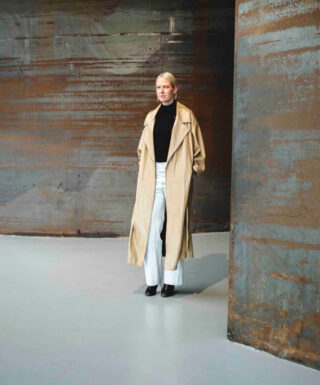Sabine Marcelis
Carbon footprint of Candy Cubicle
Sabine Marcelis notes that the Candy Cubicle celebrates wood in its natural state, a fact which contributes to the design being better than carbon neutral with a footprint of -(minus)80 kg CO2 eq. Total carbon emissions during all stages of material extraction, processing and transport, and for manufacturing at Benchmark are 105 kg CO2 eq. These emissions are offset by 18 kg CO2
eq. due to burning of wood offcuts at Benchmark (which substituted for fossil fuel) and 167 kg CO2 eq. of carbon stored in the wood. This is sufficient to offset a 630 km drive in a typical family car or 3.4 days of carbon emissions by the average EU citizen.
the design approaches the wood material in an unexpected way and this is reflected in the carbon footprint
Sabine Marcelis also observes that the design approaches the wood material in an unexpected way and this is reflected in the carbon footprint. Unlike the other designs, the Cubicle is fabricated largely in birch plywood with maple used to veneer the visible surfaces. The inner surfaces are coated with a yellow high gloss varnish while the wheels combine cast resins with metal axles. This means that a relatively large share of emissions is associated with supply of wood products other than U.S. hardwood (33%) and with glues, fittings and finishes (46%).
It takes only 0.1 seconds for the 30 kg of maple used in the design to be replaced by growth in the U.S. forest
Nevertheless, a high proportion (90%) of the finished furniture still comprises sustainable wood products and there is high conversion efficiency so that 71% of the wood delivered to Benchmark is incorporated in the finished product. Low energy input during manufacturing and Benchmark’s reliance on a renewable energy supplier add to the strong environmental performance. Despite the distances involved, transport of the American maple accounts for only 3% of all emissions associated with the design. It takes only 0.1 seconds for the 30 kg of maple used in the design to be replaced by growth in the U.S. forest.
